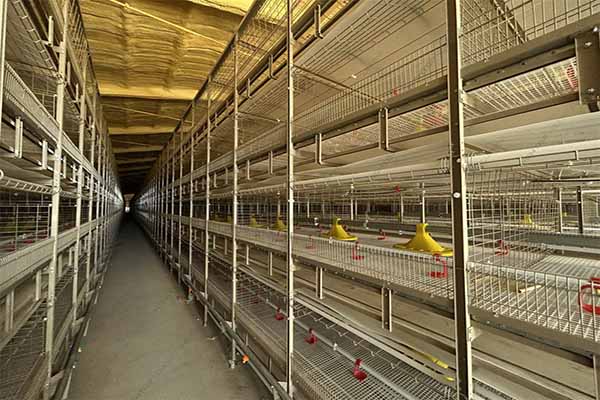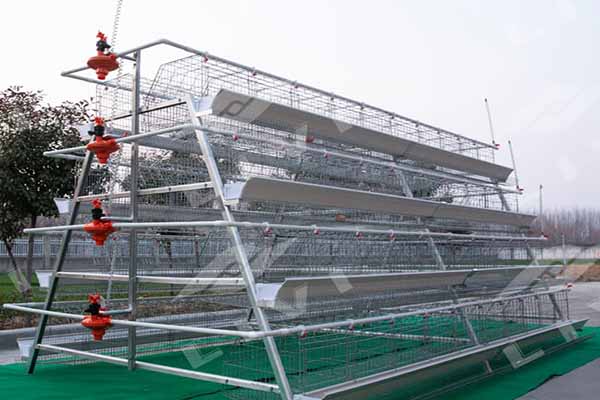How to Start a Small Scale Chicken Farm: A Comprehensive Guide
Time : 2025-06-28
Starting a small-scale chicken farm can be a rewarding venture, offering fresh, organic eggs and the satisfaction of producing your own food. Whether you’re looking to supplement your family’s diet or start a small business, this guide will walk you through the essential steps to get your small-scale chicken farm up and running.
1. Planning Your Small Scale Chicken Farm
Before you dive into the world of poultry farming, it’s crucial to have a solid plan in place.
1.1 Define Your Goals
Are you looking to produce eggs for personal use, sell eggs at a local market, or perhaps offer a variety of poultry products? Defining your goals will help you determine the scale of your operation and the type of chicken breeds you’ll need.

1.2 Research the Market
Understand the demand for eggs in your area. Check local markets, grocery stores, and community demand to gauge potential sales.
1.3 Choose the Right Location
Look for a property that is zoned for agriculture and offers enough space for your chickens to roam. Consider factors like water availability, proximity to suppliers, and transportation logistics.
2. Selecting Your Chicken Breeds
The choice of chicken breeds will depend on your goals, climate, and the type of eggs or meat you wish to produce.
2.1 Layers for Egg Production
For egg production, breeds like the Rhode Island Red, White Leghorn, and Orpington are popular choices. They are known for their high egg-laying capacity and robust health.
2.2 Broilers for Meat Production
Broiler breeds, such as Cornish Cross and Ross, are bred specifically for meat production and grow rapidly, making them efficient for a small-scale farm.
2.3 Dual-Purpose Breeds
Breeds like the Wyandotte and Buff Orpington are versatile, providing both eggs and meat. They are also known for their hardiness and can adapt to various climates.
3. Building the Coop and Run
The coop and run are where your chickens will live, so it’s important to build them with care.
3.1 Designing the Coop
The coop should be well-ventilated, predator-proof, and provide enough space for the chickens to move around comfortably. Consider the following:
- Size: A general rule is 3-4 square feet per chicken.
- Ventilation: Good air flow is essential to prevent ammonia buildup and respiratory issues.
- Roosting: Provide roosting bars for the chickens to sleep on.
- Nesting Boxes: Designate areas for the chickens to lay their eggs.
3.2 Constructing the Run
The run should offer the chickens a safe, outdoor space to forage and exercise. It should be enclosed with chicken wire or a similar material to keep predators out.
4. Equipment and Supplies
Investing in the right equipment and supplies will make your chicken farming experience more efficient and less stressful.
4.1 Feeders and Waterers
Automated feeders and waterers can help ensure your chickens have access to food and water at all times, even when you’re not around.
4.2 Heating and Cooling Systems
Climate control is crucial, especially in extreme weather conditions. Consider using heat lamps or fans to maintain a comfortable environment for your chickens.
4.3 Health Supplies</h3 >
>
Keep a stock of essential health supplies, including vaccines, medications, and electrolytes to keep your flock healthy.
5. Managing Your Chicken Flock
Proper management is key to the success of your small-scale chicken farm.
5.1 Feeding and Watering
Provide a balanced diet and fresh water at all times. Monitor their consumption and adjust their feed as needed.
5.2 Health and Welfare
Regularly check for signs of illness or injury and address them promptly. Keep the coop clean and sanitized to prevent  disease.
disease.
5.3 Egg Collection
Collect eggs daily to keep them fresh and prevent the chickens from eating them.
6. Marketing Your Products
Once you have a steady supply of eggs or meat, it’s time to market your products.
6.1 Establishing a Brand
Create a brand that resonates with your target market. This could include a catchy name, logo, and packaging.
6.2 Selling Channels
Consider selling directly to consumers at local markets, through online platforms, or by establishing relationships with local restaurants and stores.
7. Conclusion
Starting a small-scale chicken farm requires careful planning, dedication, and a passion for poultry farming. By following this guide and utilizing professional equipment and knowledge, you can create a successful and sustainable operation.











